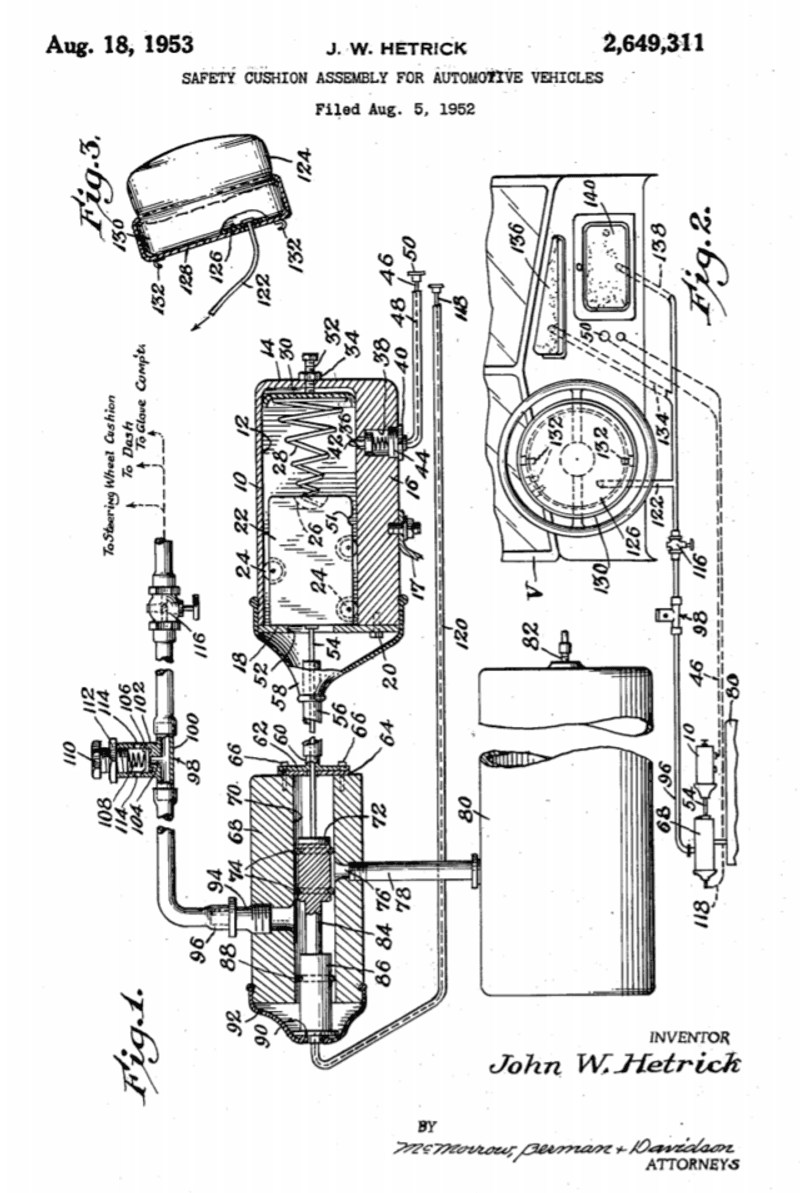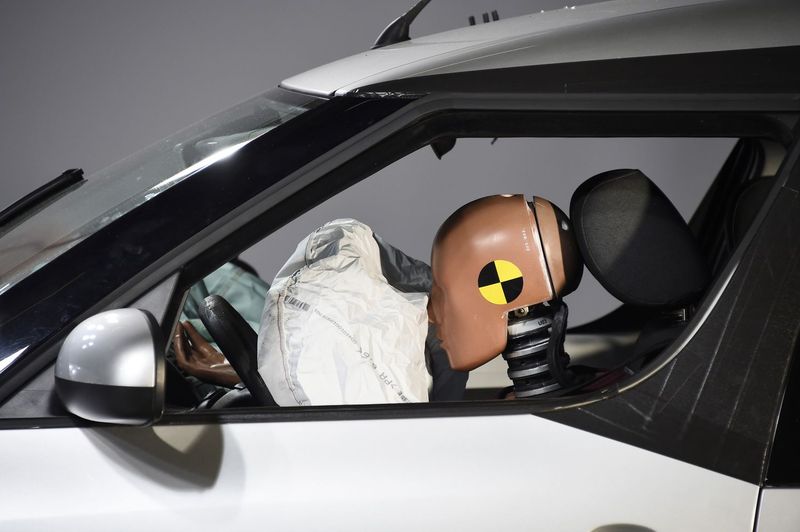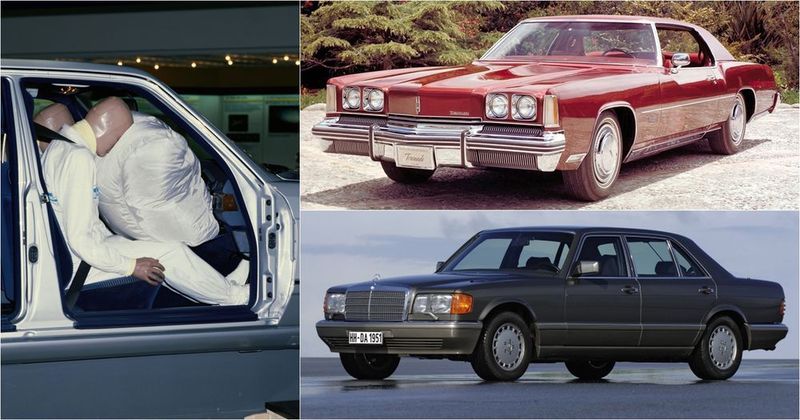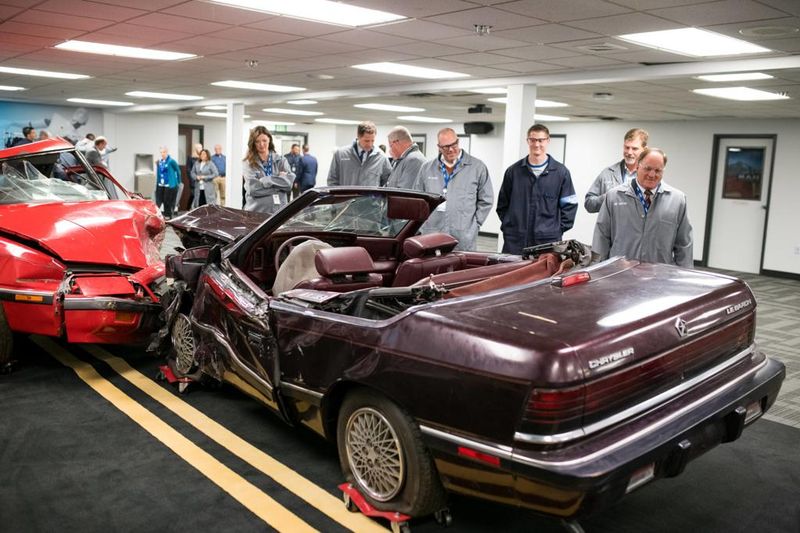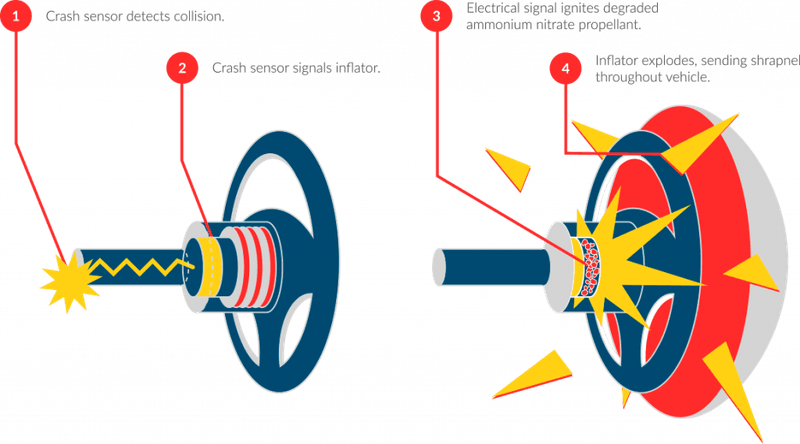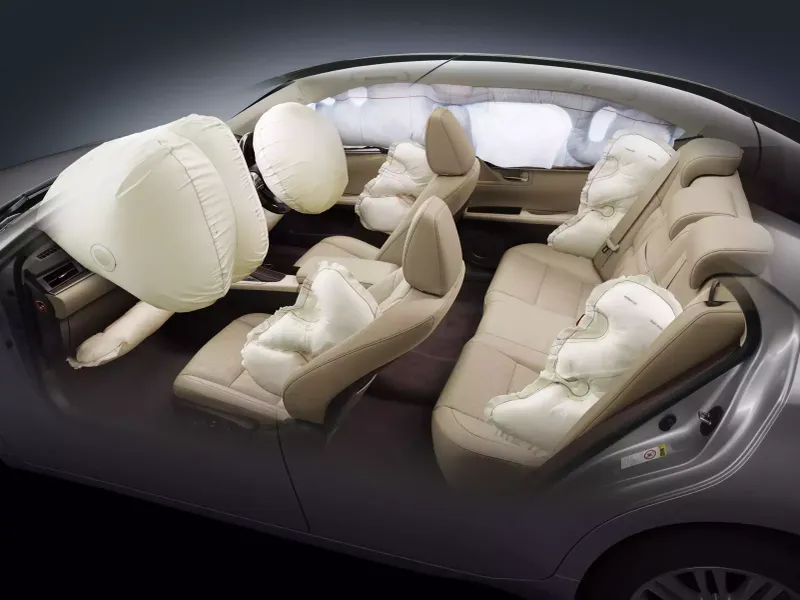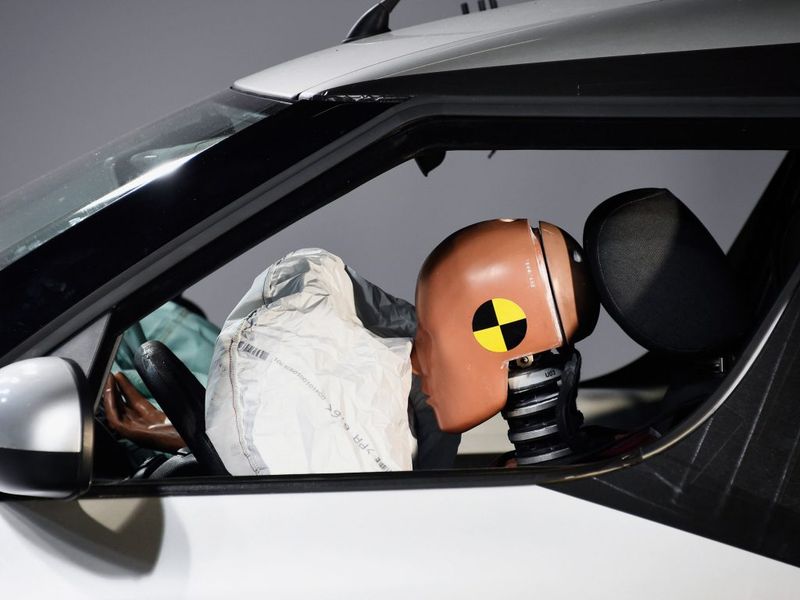Airbags have revolutionized vehicle safety, saving thousands of lives each year in crashes that might otherwise be fatal. These inflatable cushions deploy in milliseconds during a collision, protecting passengers from impact with the steering wheel, dashboard, or windows. The story behind this life-saving technology includes surprising inventors, technical challenges, and even dangerous failures that shaped today’s standard safety feature.
1. The Naval Engineer Behind It All
John W. Hetrick wasn’t an automotive expert but a naval engineer who had a flash of inspiration after a near-accident with his family in 1952. While driving, he swerved to avoid a rock and instinctively threw his arm across to protect his daughter.
This protective reflex sparked an idea. Using his knowledge of compressed air systems in torpedoes, Hetrick sketched out the first airbag concept that night. His patent (US #2,649,311) was granted in 1953, but car manufacturers largely ignored his invention for over 15 years.
Sadly, Hetrick earned just $250 for his world-changing idea and never saw his invention become standard in vehicles.
2. The German Doctor Who Made Airbags Practical
While Hetrick conceived the airbag, it was Allen Breed, a 40-year-old mechanical engineer, who transformed the concept into a practical reality in 1967. His breakthrough wasn’t the bag itself but the crash sensor that could deploy it instantly.
Breed’s electromechanical sensor used a steel ball held in place by a magnet. During a crash, the ball would dislodge, complete an electrical circuit, and trigger the airbag—all within milliseconds. This simple yet reliable design became the foundation for modern airbag systems.
Without this critical sensing technology, airbags would remain merely theoretical rather than the life-saving devices we know today.
3. General Motors’ Costly Airbag Failure
Few remember that GM boldly introduced airbags as an optional feature called the “Air Cushion Restraint System” in 1974 Buick, Oldsmobile, and Cadillac models. This pioneering effort cost the company millions in development.
The system flopped spectacularly. Consumers balked at the $300 price tag (equivalent to about $1,700 today), and dealers struggled to explain the benefits. Technical issues plagued the early design—some deployed accidentally during normal driving, while others failed during actual crashes.
By 1976, fewer than 10,000 cars had been equipped with these airbags, and GM abandoned the project, considering it a costly market failure.
4. Mercedes-Benz’s Luxury Safety Revolution
Mercedes-Benz shocked the automotive world in 1981 by making driver-side airbags standard equipment in their flagship S-Class models. At a time when most manufacturers considered airbags too expensive or unreliable, this German luxury brand took a bold stance on safety.
Engineers spent seven years perfecting their system, conducting over 250 crash tests. The company’s marketing brilliantly positioned airbags as a luxury feature worth paying for, not just a safety device.
This gamble paid off enormously. Mercedes’ reputation for safety soared, and competitors scrambled to catch up, accelerating airbag adoption across the industry by nearly a decade.
5. The Deadly Early Airbag Problem
Early airbags had a dark secret—they could kill the very passengers they were designed to protect. First-generation airbags deployed with explosive force, equivalent to a small bomb detonating in the dashboard.
Between 1990-2008, over 290 people—mostly children and small adults—died from airbag injuries. The bags deployed at speeds up to 200 mph, causing devastating neck and head injuries to smaller passengers.
This tragic reality forced manufacturers to completely redesign airbag systems with variable-force deployment and advanced sensors. It also led to new laws requiring children under 12 to ride in the back seat—a safety practice that continues today despite modern airbag improvements.
6. The First Life Officially Saved
March 12, 1990 marks a historic milestone in automotive safety. On that rainy Virginia morning, a red Chrysler LeBaron collided head-on with another vehicle at approximately 35 mph. The driver, Brenda Renewed, walked away with minor bruises.
This unremarkable fender-bender became remarkable when investigators confirmed it as the first documented case where an airbag definitively saved a life. Crash analysis showed Renewed would have suffered fatal head injuries without the airbag deployment.
Chrysler’s marketing department pounced on this validation, featuring Renewed in advertisements. Her survival story helped shift public perception of airbags from expensive novelties to essential safety equipment.
7. The Takata Scandal That Shook the Industry
In 2008, what began as isolated reports of unusual airbag deployments exploded into the largest automotive recall in history. Takata Corporation, then supplying nearly 20% of global airbags, had cut corners by using ammonium nitrate propellant without proper moisture protection.
As these airbags aged, particularly in humid climates, they became unstable bombs. When deployed, metal fragments from the inflator would shoot through the airbag fabric like shrapnel. At least 24 people died and hundreds were injured worldwide.
The scandal bankrupted the 84-year-old Japanese company in 2017 and forced the recall of over 100 million vehicles across 19 manufacturers—a safety crisis that continues affecting vehicles today.
8. Airbags Now Protect More Than Just Your Face
Modern vehicles contain a hidden network of specialized airbags that would astonish early inventors. Beyond the familiar steering wheel and passenger dash airbags, cars now include side curtain airbags that drop from the ceiling to protect your head during rollovers.
Knee airbags deploy from under the dashboard to prevent leg injuries. Seat cushion airbags lift upward to prevent sliding under seatbelts. Some luxury vehicles even feature seatbelt airbags that inflate during crashes to distribute force across the chest.
The most innovative? Volvo’s pedestrian airbag, which deploys from the hood to protect people struck by the car—extending airbag protection beyond the vehicle’s occupants.
9. The Explosive Speed of Deployment
An airbag’s deployment is a marvel of engineering precision. From the moment sensors detect a crash, the entire process—from ignition to full inflation—completes in just 20-30 milliseconds. That’s faster than the blink of an eye (100 milliseconds).
The inflation occurs at speeds exceeding 200 mph through a controlled explosion of sodium azide, which instantly creates nitrogen gas. This reaction generates temperatures around 650°F inside the bag.
To prevent this heat from burning passengers, airbags are coated with talcum powder and designed with tiny holes that allow immediate deflation after impact. Without these vents, the fully inflated bag would bounce your head like a basketball.
10. The Staggering Life-Saving Statistics
The National Highway Traffic Safety Administration’s data tells an extraordinary story: airbags have saved approximately 50,457 lives between 1987 and 2017. That’s roughly equivalent to the entire population of a small city, all walking around today because of this technology.
Front airbags reduce driver fatalities by 29% and front passenger fatalities by 32% in frontal crashes. When combined with seatbelts, the protection rate jumps to 61% reduced risk of death.
The economic impact is equally impressive. Airbags prevent an estimated $10 billion in medical costs annually—a figure that far exceeds the manufacturing cost of including them in vehicles.

